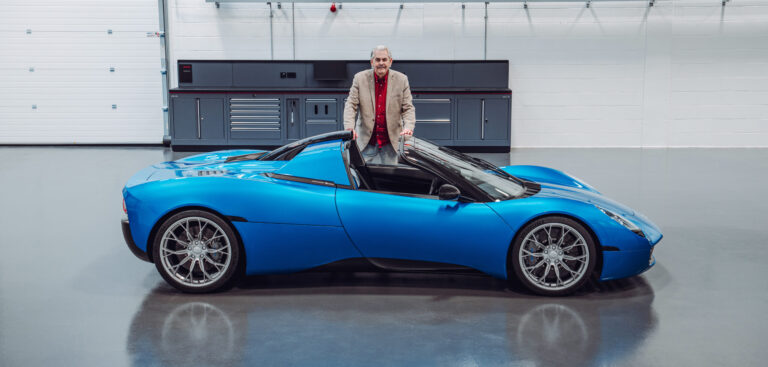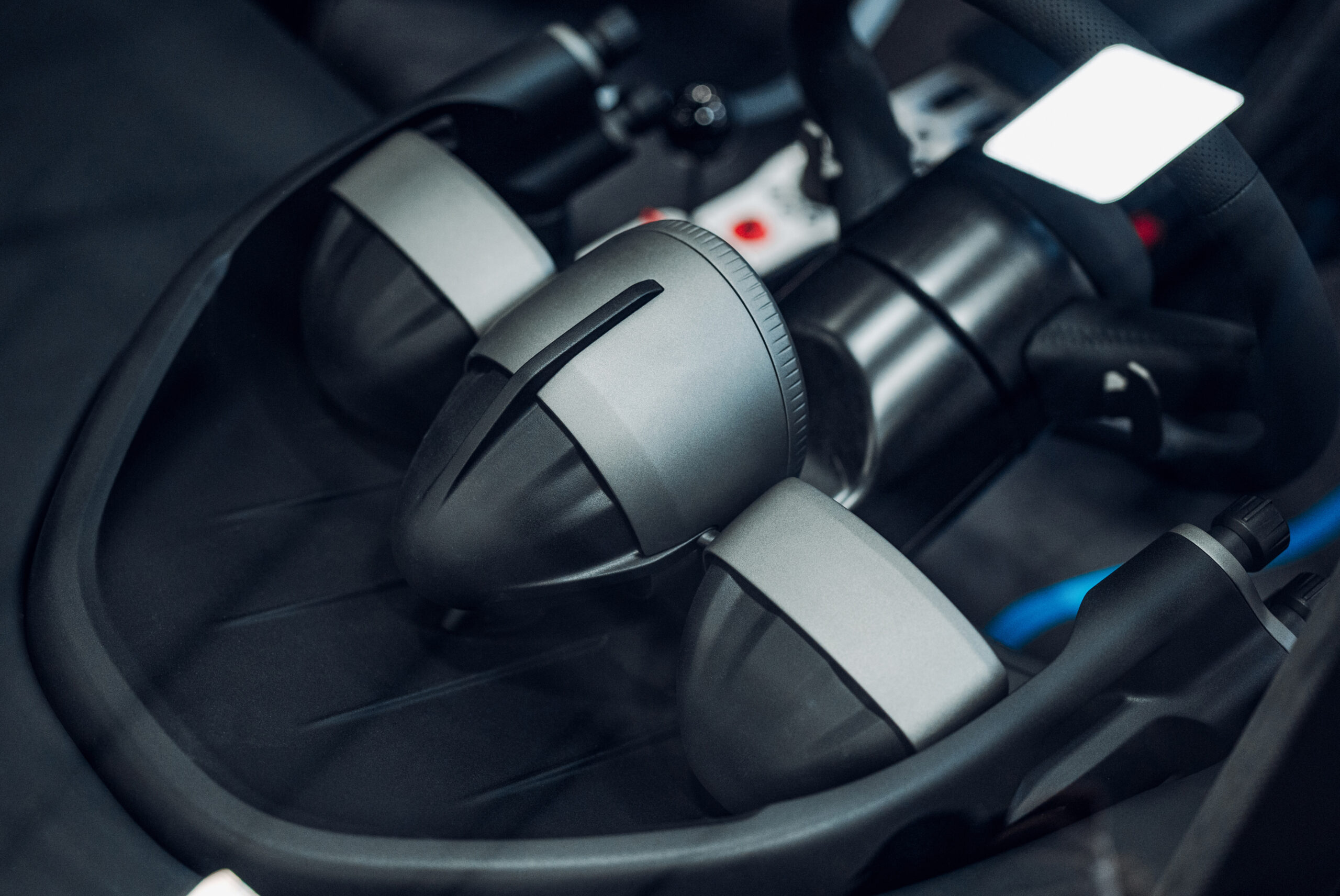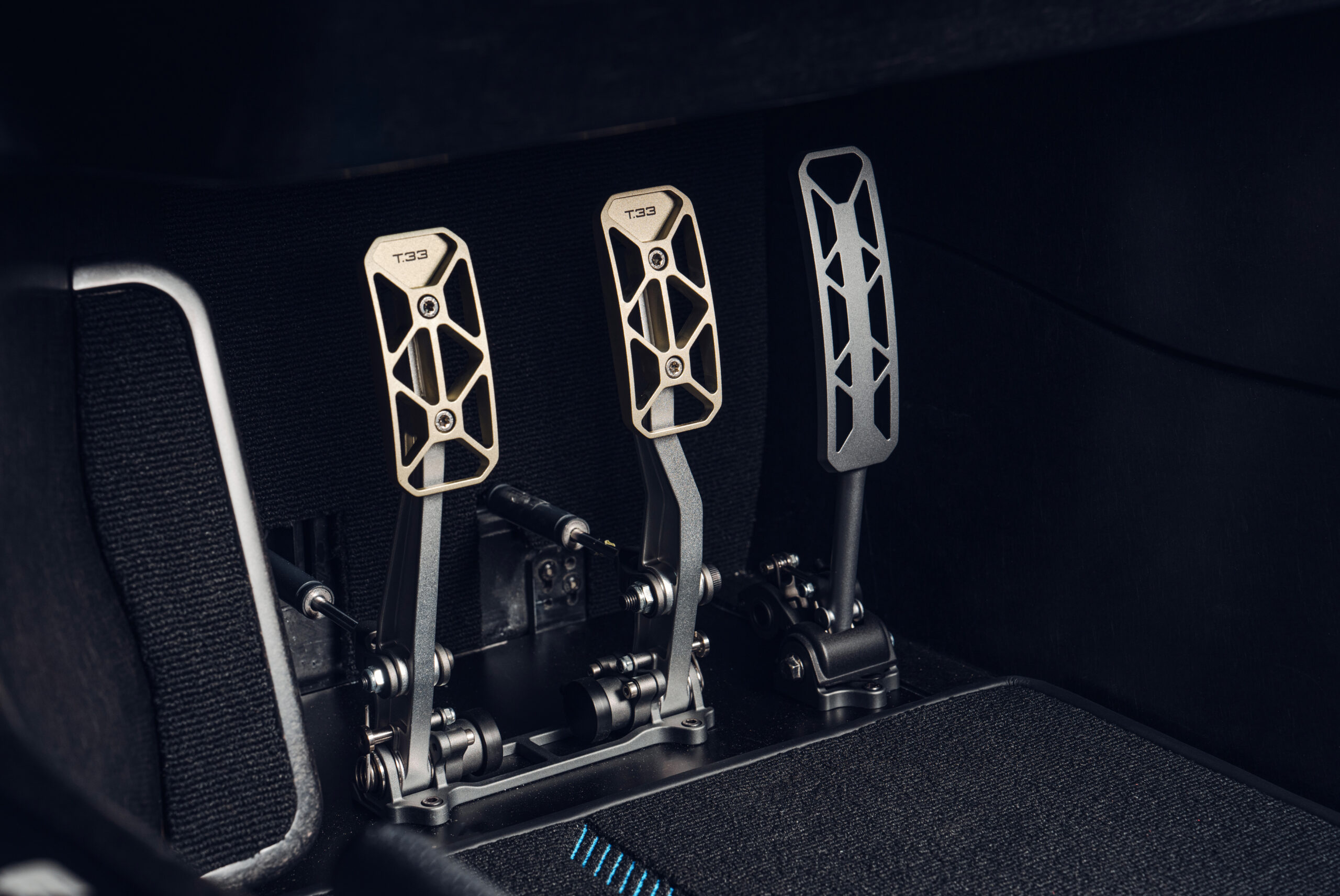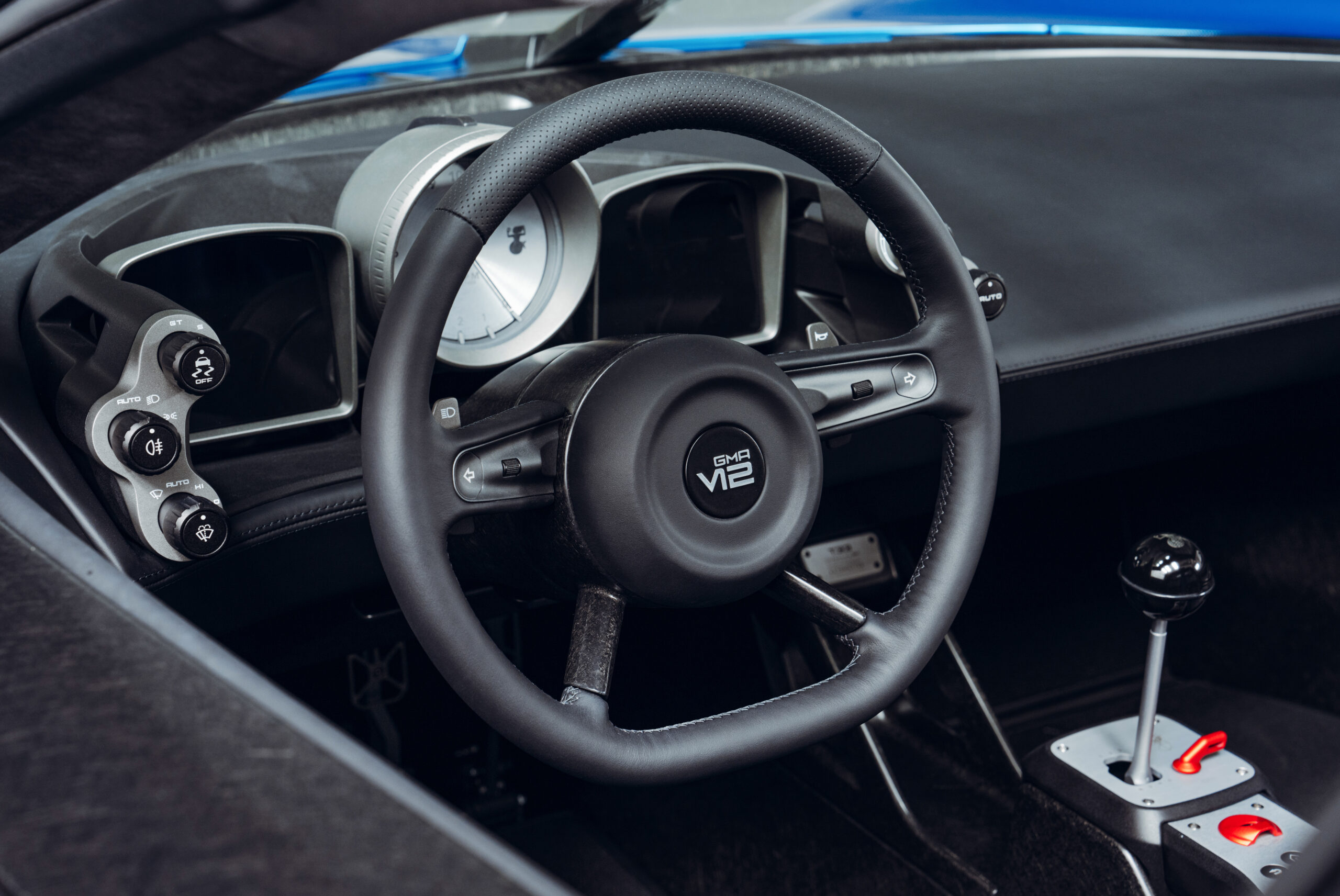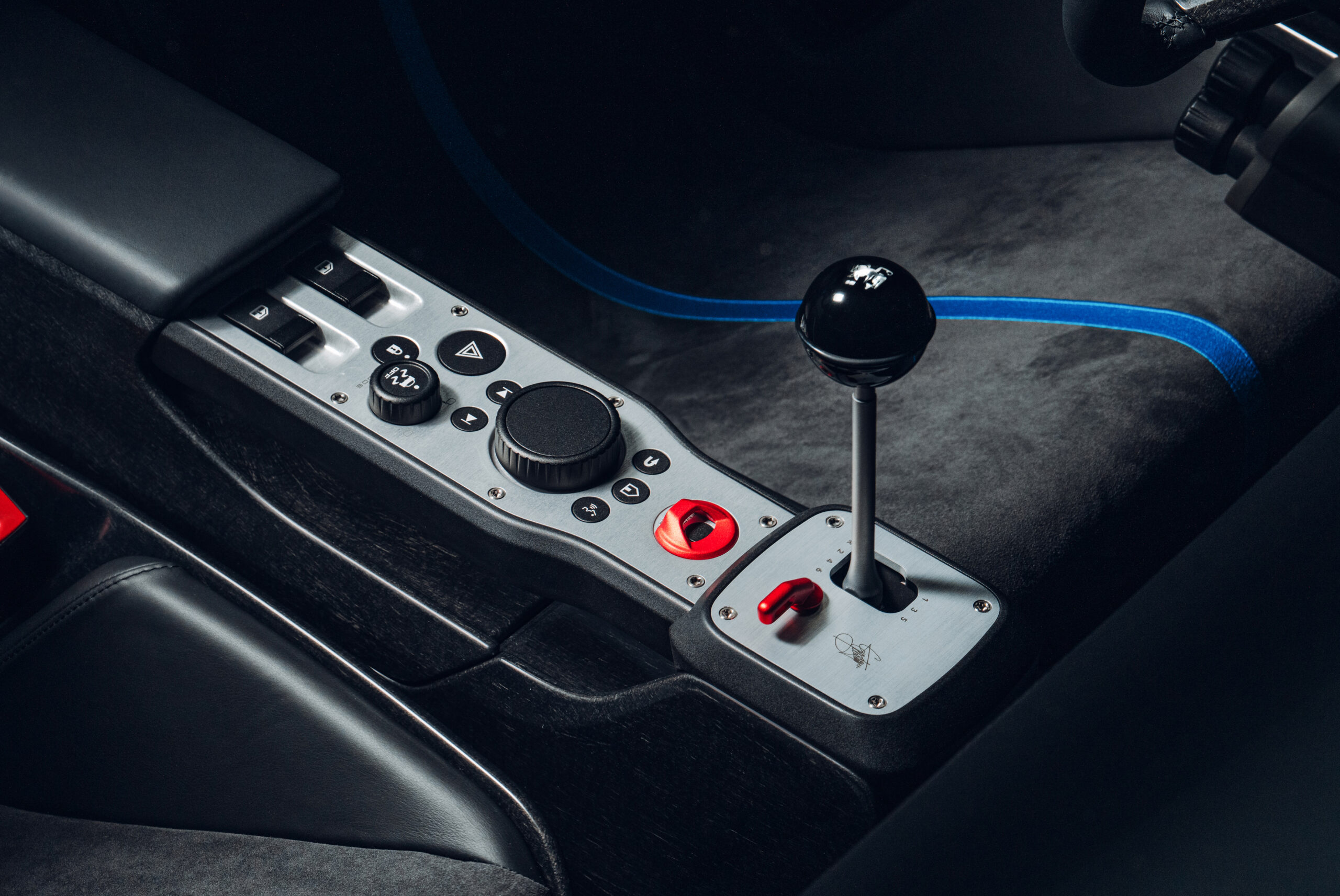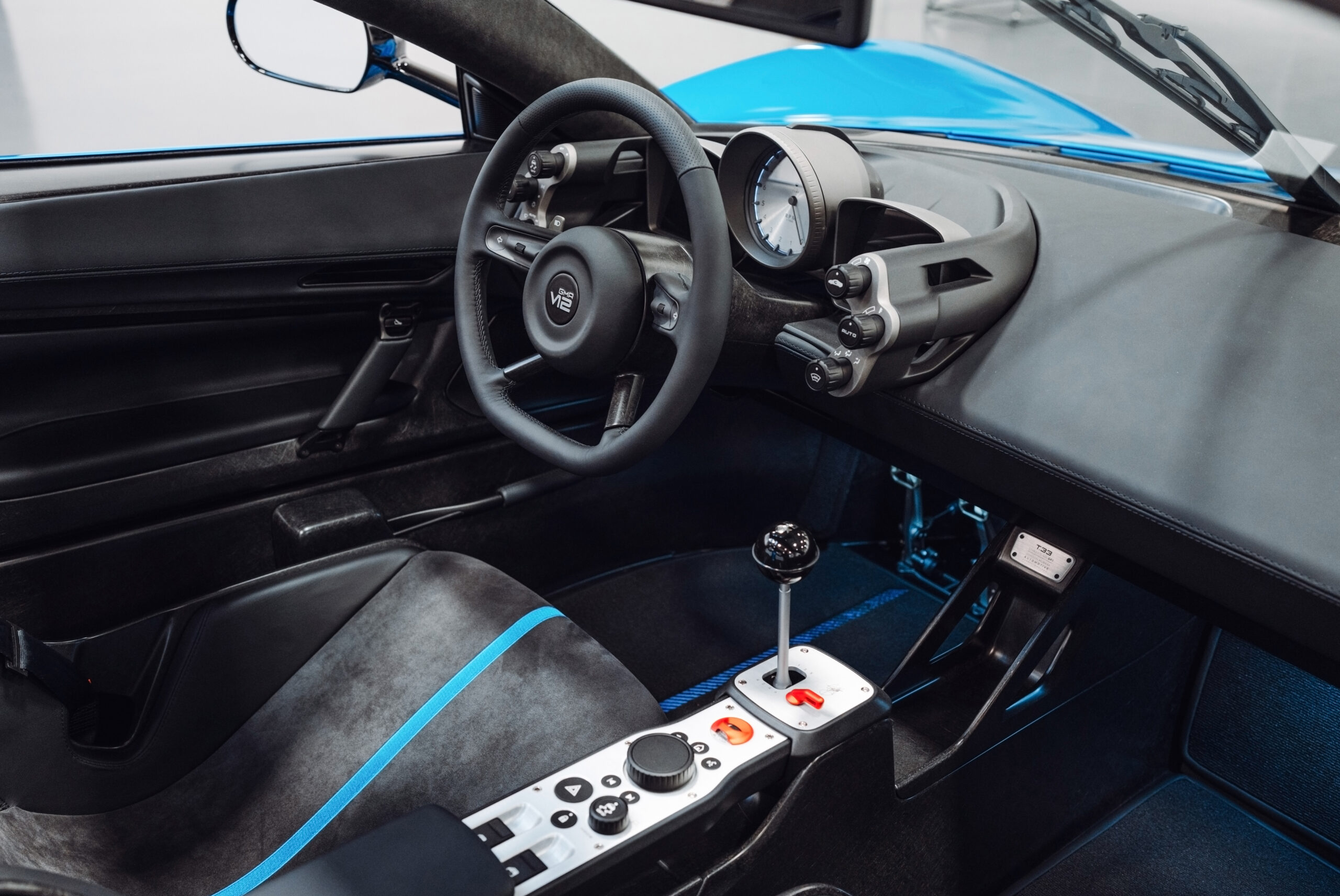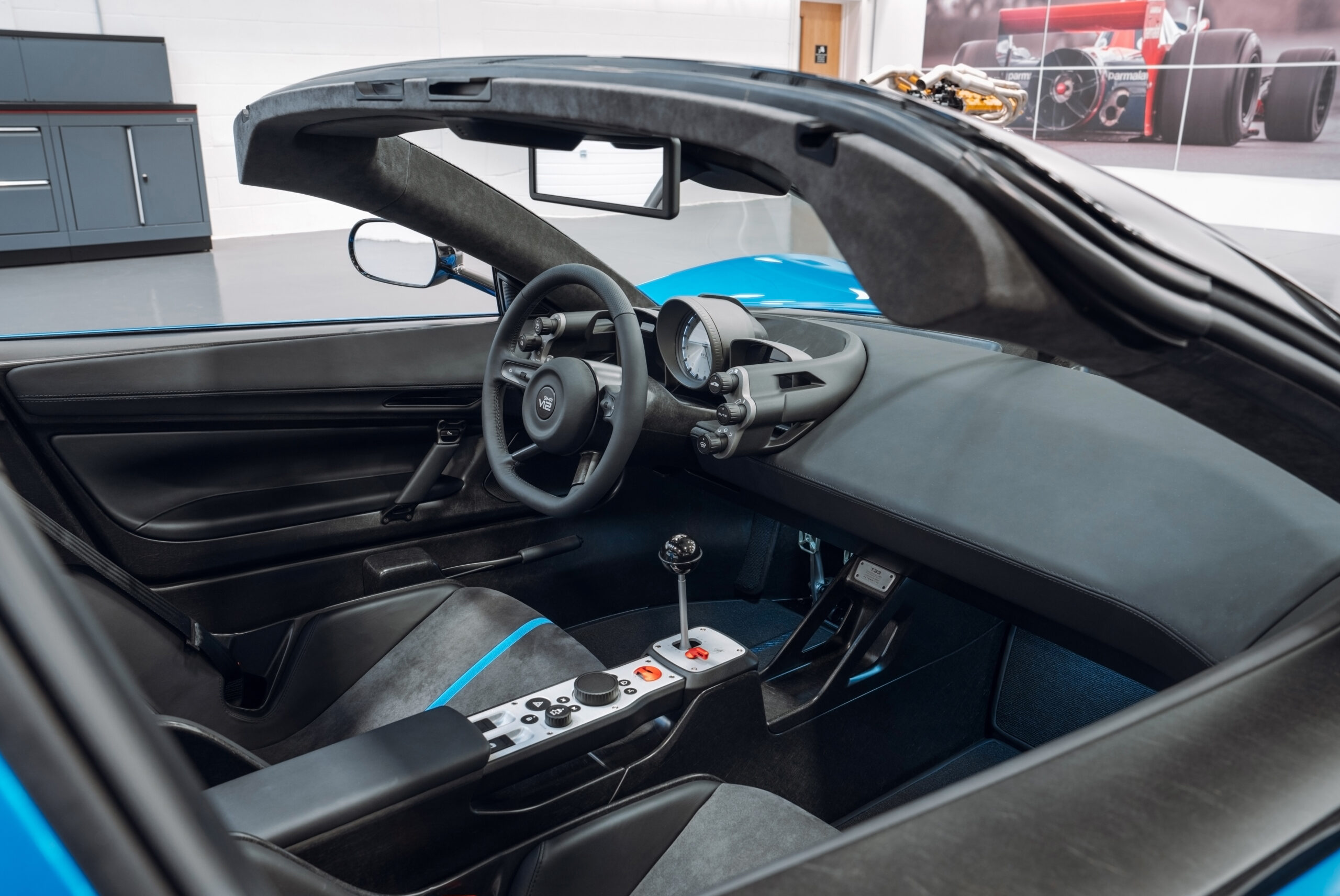For its latest T.33 Spider model, Gordon Murray Automotive ensured the vehicle’s cabin delivered a driver-centric experience. The main focus of the instrument cluster is the vehicle’s centrally mounted, 120mm analog rev counter, which is calibrated to 11,100rpm to work in conjunction with the Spider’s Cosworth GMA V12 powerplant.
On either side of the instrument cluster are secondary displays for climate control and infotainment, which enables wireless Apple CarPlay and Android Auto connectivity.
Ergonomic by design, the T.33 Spider’s carbon-fiber steering wheel has been upholstered in leather and combined with optimally weighted pedals, a gear shift lever and switchgear machined from aluminum alloy. Furthermore, the vehicle’s carbon-fiber seats have been trimmed in leather and Alcantara.
The T.33 Spider has removable roof panels and rear glass that drops down behind the rear bulkhead at the press of a button, enhancing the feeling of cabin space. The panels – made from a lightweight carbon composite – can be stowed in the front luggage compartment when not in use. Further storage is integrated into the vehicle’s rear haunches in the form of two 90-liter stowage compartments and opened with a button concealed under the dihedral doors.
“When drawing a car I imagine what it’s going to feel like to sit in, and how it will feel to drive,” said Professor Gordon Murray CBE. “So from the first sketch I knew that, with its open cockpit and the incredible Cosworth GMA.2 V12 engine right behind you, the T.33 Spider would deliver a truly involving driving experience that’s quite unlike anything else. And while it’s still a mid-engine supercar, I wouldn’t accept any compromise on usability: this is why the T.33 Spider is unique in the supercar sector in delivering both onboard roof storage and a 295-liter luggage capacity.”


